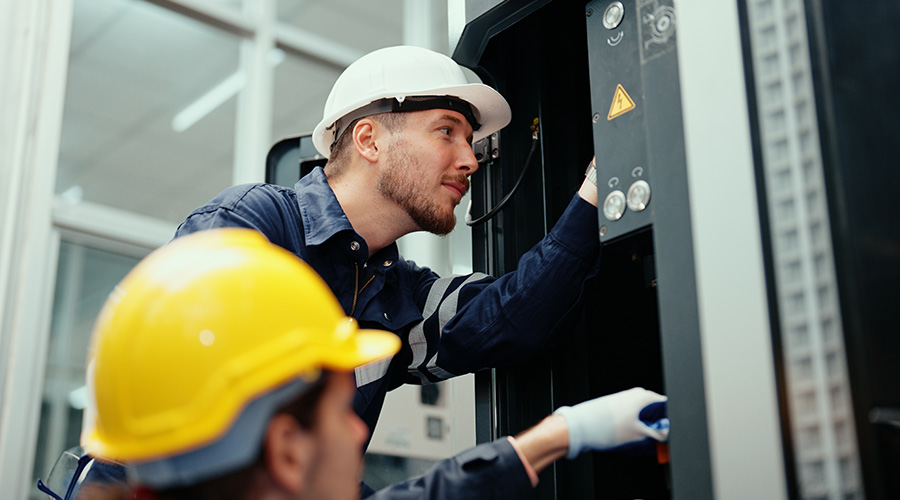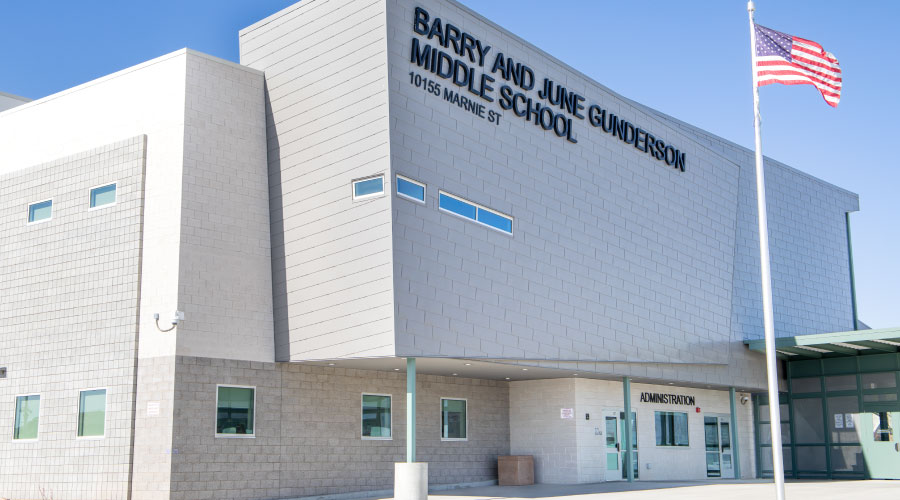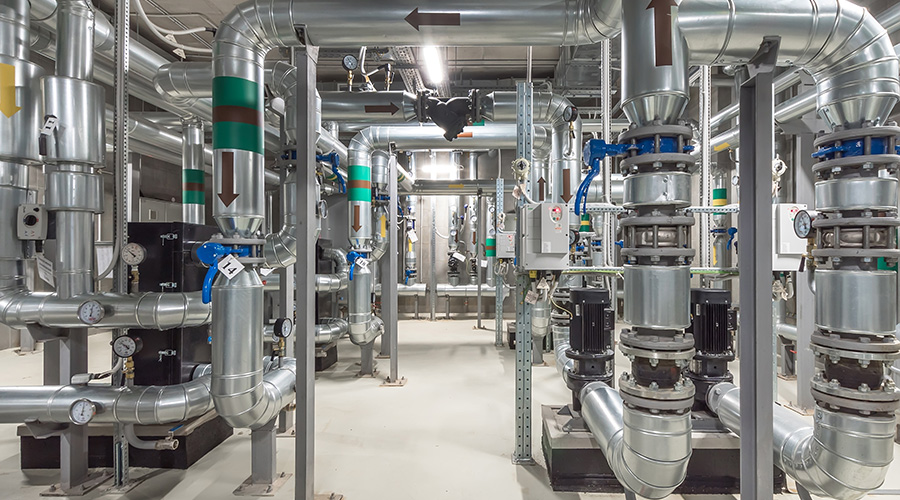Cooling On the Move
Understanding portable cooling options helps
managers be prepared when hot weather strikes
Persistent hot and humid weather is a reminder for many maintenance and engineering managers to make decisions on the potential need for portable cooling. Planning now, well in advance of next year’s warm weather, is likely to pay great dividends.
In organizations where there might be resistance to such consideration, managers can compare the purchase and operating costs of portable cooling equipment against the revenue lost opportunity cost in service-oriented businesses. The lost revenue range can be from $1,200 to $108,000 per minute.
For example, a mid-range credit card business can lose $43,000 per minute if operations are interrupted. The estimated cost for the loss of one 50-user file server is $10,000 per hour. These costs, combined with the relatively low cost of air conditioning, provide a very high return on the investment in portable air conditioning and cooling systems.
To lay the groundwork for such decision, managers should review available equipment and technology options, determine the cooling capacity that might be needed for a particular facility, and research ways to work cost-effectively with the rental companies that offer portable cooling equipment.
Technology Options
Either portable air conditioners or portable evaporative coolers are specified, depending on the conditions. Generally, a 1-ton — 12,000 Btu per hour — portable air conditioner can cool about 400 square feet of space. Portable units of up to 5 tons are available.
Portable air conditioners can be used in any location, but portable evaporative coolers are not recommended for areas with high-humidity — above 50 percent — areas or where cooled air is not vented. Evaporative coolers work by passing supply air through a wet pad and transferring both heat to the water and some water to the cooled air. Evaporative coolers cost much less to operate — about one-fifth the cost of portable air conditioners.
A typical portable evaporative cooler delivers about 400 cubic feet per minute (CFM) and is best suited for spot cooling in dry climates. Air conditioners dehumidify in addition to cooling.
Portable refrigerant-type air conditioners offer higher cooling capacity — up to 60,000 Btu per hour. These units use centrifugal evaporators, centrifugal or propeller condensers, and rotary or reciprocating compressors with up to a 6-pound charge of Freon or other refrigerant. While requiring more power — up to 7 kW — they deliver more cooling — more than 2,500 cfm — and can operate in higher-humidity conditions.
Coolers are usually 110- or 220-volt, while air conditioners are 110-volt, single phase to 440-volt, three-phase.
Optional available features include thermostatic control, anti-freeze control, antibacterial filter, hydrophobic fins, adjustable vent speed and air flow, 24-hour timer, sleep function, self-testing, on-off indicator, auto-restart, compressor overload protection, and fan-motor protection.
Determining Needs
Maintenance and engineering managers often have a number of portable cooling applications throughout their facilities, including backup emergency cooling, spot-cooling for people and equipment, cooling at outside events, cooling for warehouse loading docks, and cooling for computer closets and rooms. But determining the amount of cooling required can be difficult, given the variety of space types, operations and the nature of an emergency.
Many manufacturers supply calculators that can help in simplifying the process of determining the amount of cooling a facility needs. To use a typical software or Web site calculator, managers can enter the space size, amount of square feet of window opening, occupants and other heat sources in the area, and the geographic location. The calculator does the rest, giving the number of Btu per hour and even the model number needed.
For example, a 12-foot by 12-foot by 8-foot-high space with 30 square feet of sunny window openings, occupied by two people, in the northern Midwest, typically would need a unit that is rated at 7,000 Btu per hour.
Managers also would be wise to check the energy efficiency rating (EER) of a supplier’s units. If the product literature doesn’t provide this rating, managers can calculate it by dividing Btu output by the power input in watts.
In the example above, if the Btu per hour output is 7,000 and the power input is 740 watts the EER is 9.5 (7,000/740). The higher the EER, the better. So a high EER means lower the energy cost for the same amount of cooling.
When selecting portable coolers, managers should consider both first cost and operating cost. Portable air conditioners cost about $0.12 to $0.60 an hour to operate in the 1- to 5-ton range. The cost of a typical 36-inch-fan, three-speed portable cooler starts at about $2,000-$2,500. It can lower the temperature 20 degrees at an average cost of $0.50 per day in water and power consumption.
The most efficient cooling is accomplished when the air temperature is higher than 95 degrees and the relative humidity is not higher than 75 percent.
Additionally, off-peak electrical energy costs can be as low as one-fifth of peak energy costs. In facilities with large air conditioning energy needs, managers can negotiate better rates with the power company by combining direct evaporative cooling with thermal energy storage, making the cooling capacity during off-peak hours by freezing water at night, then storing it for use during peak hours.
Weekly or monthly rental are good options when emergencies arise or when a facility has an infrequent, unpredictable need, such as a power failure, a temporary load, or a once-in-10-year heat wave.
Even if the need is a surprise, managers still can plan ahead. It pays to have the specifications figured out and know the rental options before the event occurs so they can take immediate action to acquire the equipment and get it in place. Put this information in the organization’s disaster plan, and keep it up to date as facilities change.
Preventive Maintenance
A little care and cleaning will keep portable coolers in good shape so they can operate at their best. Consider these preventive maintenance recommendations for evaporative coolers:
- Dry pads overnight.
- Clean them to prevent mineral buildup.
- Treat for fungi, bacteria and algae.
- Drain and clean tanks each week.
- Keep spray nozzles clean.
For refrigerant-type air conditioners that have more mechanical and electrical parts, cost more and require more maintenance, consider these steps:
- Visually check weekly during the operating season.
- Test and adjust lubrication, filters and safety features.
- Perform refrigerant checks monthly.
- Inspect and adjust or replace worn parts on startup and shutdown, and perform monthly checkups.
Cutting-Edge Cooling
The U.S. Department of Energy’s Ames Laboratory, in cooperation with the cooling industry, has developed a new refrigeration technology, the gadolinium/magnet refrigerator. Gadolinium, a rare earth element, heats up when passed near a powerful permanent magnet, then cools rapidly to below room temperature when removed from the magnetic field.
A gadolinium wheel rotates through a magnetic field, a segment heats up, then cools when it leaves the field. The cooled segment cools water that is circulated through the refrigerator unit, lowering the temperature.
Consider these advantages:
- No Freon, ammonia or other costly, ozone-depleting refrigerant to replace.
- Fewer moving parts, only a pump to circulate water and a motor to turn the wheel and drive the pump.
The permanent magnet never wears out.
- Estimated energy use that is 20-30 percent lower than existing methods.
Manufacturers say the technology could be on the market in the next five years, depending on availability of investment capital.
|
Sample Cooling Specification
A typical 1-ton portable spot cooler has the following specifications:
- Cooling capacity: 12,000 Btu per hour.
- Dimensions: 20 inches wide, 23 inches deep and 32 inches high, weighing 155 pounds.
- Electrical: 115 volt, three phase, 60-cycle power supply; 1.3 kilowatts cooling; 12 amps (15-amp fuse); NEMA 5-15P plug; 105-125 volt range; three-wire #14 power cord, 10 feet long.
- Compressor: Hermetic rotary; 29-ounce R22 charge; 55-105 degrees at 50 percent relative humidity operating range.
- Fans: Centrifugal evaporator; 320-400 cfm; static pressure, 0.30 inches water.; centrifugal condenser; 580 cfm; 0.30 inches water.
- Safety devices: compressor overload; fan-motor protection; hot-gas bypass; automatic tank shutoff; 5-gallon condensate tank; high-pressure switch; compressor short-cycle protection; fan mode switch; manual restart; and digital thermostat.
- Other features: Operating cost- $0.12 per hour; humidity removed- 0.85 gallons per hour; can use condensate pump instead of tank; sound level, 54 decibels; evaporator straight duct length, 10 feet maximum; condenser straight duct length, 15 feet maximum; also available, 208/230 volt, one-phase, 60 cycle.
|
Cool Facts
Decisions on portable cooling needs for facilities are affected by a range of issues within facilities, so managers will need to do their homework and gather facts about their facilities and cooling needs before taking action. The variables to have available when contacting companies regarding portable cooling options include the following:
- Is this a rental or purchase?
- When does the facility need it?
- For how long will it be needed?
- What is the total wattage operating in the area to be cooled, including computers and other applications and operations?
- What is the desired temperature range? 70 degrees for computers is suggested.
- What is the desired humidity? 50 percent for computers is suggested.
- What are the dimensions of the area to be cooled?
- How many employees work in the area?
- Are employees sitting, or are they working strenuously?
- How many square feet of windows does the area contain?
- In which direction do the windows face?
- What voltage is available?
- Single- or three-phase?
- Condensate tank or pump humidity removal? The pump option is best for 24-hour, seven-day operation.
From this information, the vendor can specify the right portable cooling option. Specifications will indicate the cooling capacity a facility needs, dimensions, electrical characteristics, fan characteristics, safety devices and other features that will ensure success.
|
Related Topics:











